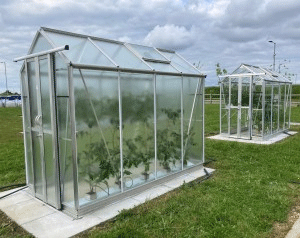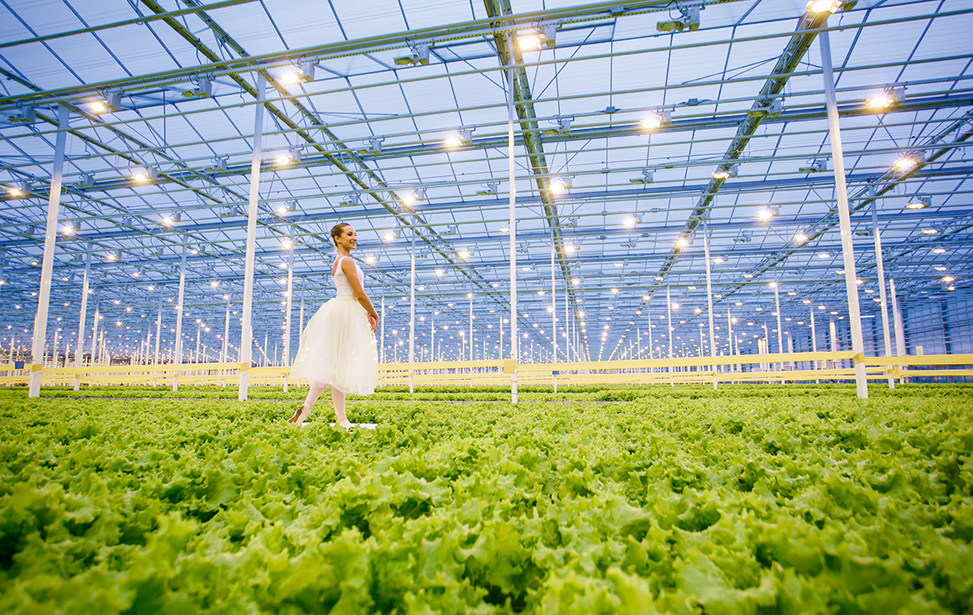Greenhouses are pivotal in modern agriculture, providing controlled environments for growing crops. However, in regions with limited sunlight, artificial lighting—often powered by expensive LEDs—has been a necessary but costly solution. Researchers at the University of Bath, in collaboration with Lambda Agri, have developed a groundbreaking solution: a high-tech paint that transforms sunlight into wavelengths plants use more effectively.
The Science Behind the Paint
The paint works by mimicking the fluorescence effect seen in certain chemicals, such as quinine in tonic water, which glows under UV light. By absorbing UV rays and re-emitting them as red light, the paint enhances photosynthesis—the process plants use to convert light into energy. With an impressive efficiency rate of 80–90%, the paint enables plants to grow with less light input, effectively boosting their productivity.
In trials conducted in greenhouses treated with the paint, basil plants showed a 9% increase in yield compared to those grown in untreated conditions. Researchers suggest that similar benefits could apply to crops like tomatoes, cucumbers, strawberries, and lettuce.
Extending Growing Seasons and Cutting Costs
One of the most significant advantages of this innovation is its potential to extend the growing season in regions with less sunlight, such as Northern Europe and the UK. By reducing the reliance on artificial lighting, farmers can lower operating costs and decrease carbon emissions.
Additionally, preliminary studies indicate that the paint may increase the sugar content in fruits like strawberries, enhancing their flavor and market appeal.
Economic and Environmental Benefits
Dominic Wright from the University of Cambridge emphasizes the potential impact of this technology on food availability and affordability. By making greenhouse-grown produce more cost-effective, it could increase access to fresh fruits and vegetables for consumers in regions with harsh climates. Furthermore, the reduction in energy usage aligns with global efforts to mitigate climate change.
The high-tech paint developed by the University of Bath offers a sustainable, cost-effective way to boost greenhouse productivity. Its ability to convert UV light into usable red light not only improves crop yields but also reduces the environmental footprint of greenhouse farming. As this technology gains traction, it could revolutionize agriculture in regions with challenging growing conditions, ensuring a more resilient and sustainable food supply.












